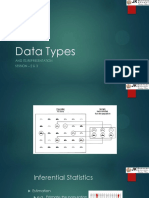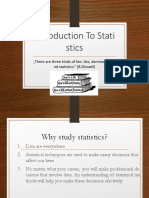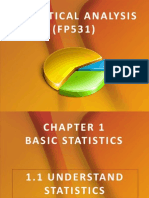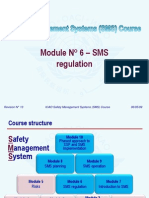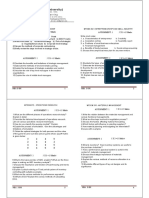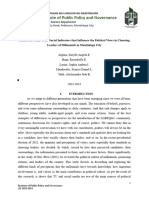0% found this document useful (0 votes)
2 views5 pagesModule 1
The document provides an overview of statistical concepts, including definitions of quantitative variables, types of statistics (descriptive and inferential), and various measurement scales (nominal, ordinal, interval, ratio). It also discusses data gathering instruments, sampling methods, and how to present data using different types of graphs. Additionally, it covers properties of frequency distributions and measures of central tendency, including mean, median, and mode.
Uploaded by
jelsieangelamendozaCopyright
© © All Rights Reserved
We take content rights seriously. If you suspect this is your content, claim it here.
Available Formats
Download as PDF, TXT or read online on Scribd
0% found this document useful (0 votes)
2 views5 pagesModule 1
The document provides an overview of statistical concepts, including definitions of quantitative variables, types of statistics (descriptive and inferential), and various measurement scales (nominal, ordinal, interval, ratio). It also discusses data gathering instruments, sampling methods, and how to present data using different types of graphs. Additionally, it covers properties of frequency distributions and measures of central tendency, including mean, median, and mode.
Uploaded by
jelsieangelamendozaCopyright
© © All Rights Reserved
We take content rights seriously. If you suspect this is your content, claim it here.
Available Formats
Download as PDF, TXT or read online on Scribd
/ 5



































